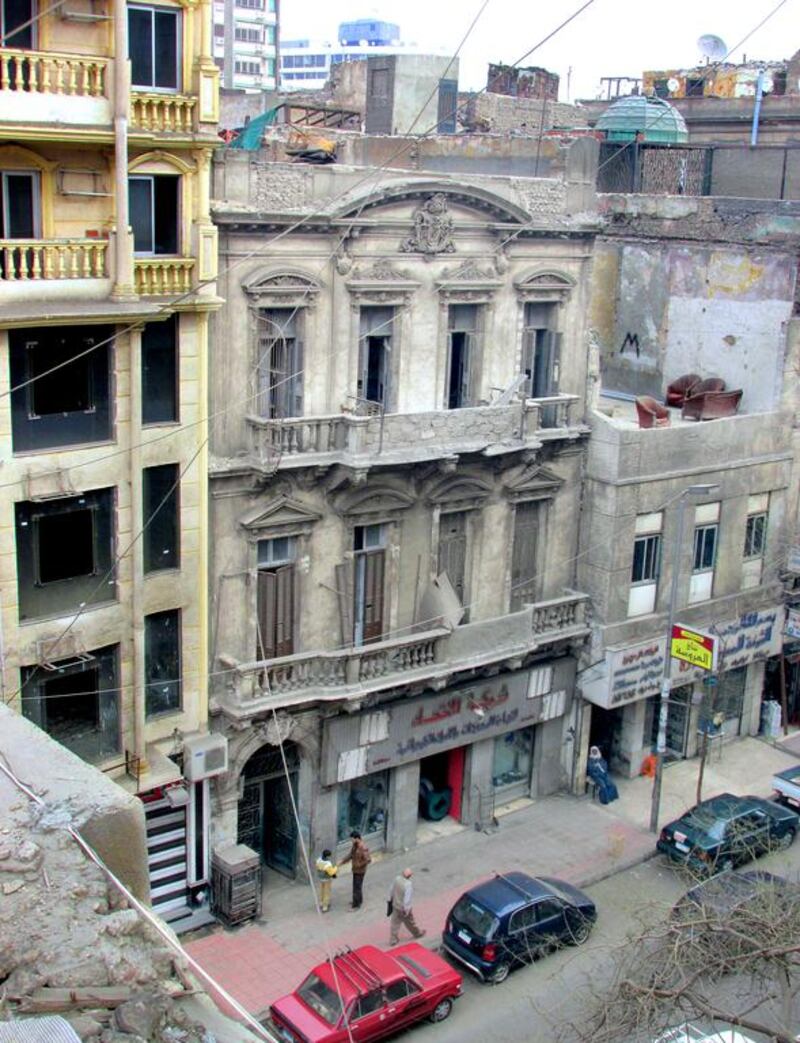Deep down a winding dead-end back alley in the Cairo district of Bulaq, so hidden that few people apart from the residents themselves ever see it, lies an exquisite arched gateway made of ornamental stone.
Bulaq is full of such treasures, although often hard to find; beginning in the 15th century it was Cairo's wealthy port on the Nile, when the spice trade and later the coffee trade to Europe passed through Egypt. As such it was chock-a-block with well-built warehouses, merchant lodgings and religious structures. In 1979, it was one of about a dozen Cairo neighbourhoods placed on Unesco's World Heritage List.
The gateway is in the Mameluke style, indicating it may have been built as long as 500 years ago.
As a group of friends and I were admiring the stonework, the owner appeared, a plump middle-aged man in a polyester track suit, and with uncontrolled glee he told us he planned to rip it down to build an apartment building. "It is my property. I own it and I can do whatever I want with it," he said.
His is probably not an idle threat.
Already a problem before the 2011 uprising, the destruction of Egypt's historic buildings has accelerated to a horrible pace over the past four years as developers and looters take advantage of a breakdown in central authority to obliterate Pharaonic and Islamic structures, as well as a host of 19th and early 20th-century riches that other countries would die to possess.
"We don't need Daesh. We are our own Daesh," says the architectural activist Omniya Abdel Barr, in a reference to the terrorist group also known as ISIL that has been smashing ancient monuments in Iraq and Syria over the past few months.
This loss of Egypt's historical landscape is a financial disaster for the country.
In 2010, before tourism was walloped by the political turmoil, 14.7 million visitors who spent US$12.5 billion came to Egypt. One in 10 Egyptian workers was employed in the industry.
Much of this was historical tourism, a sector that Egypt, despite having one of the best brand names in the world, has only scratched the surface of. There are tens if not hundreds of billions of dollars yet to be earned throughout the country, provided there is something left for people to see.
The destruction has been relentless. In Port Said, built on landfill dug from the Suez Canal in the 1860s, buildings akin to those of the French Quarter in New Orleans, but with four storeys rather than two, are being devoured to make room for garish and often unsafe apartment towers.
The skyline of Alexandria's dramatic East Harbour, one of the most beautiful ports in the Mediterranean, has been perhaps permanently marred by illegal and cheap-looking high-rises on the streets behind.
In Cairo's historic Islamic Darb Al Ahmar district, the Bab Al Mufti, a 19th-century ornamental stone gate on a main street, was toppled in early 2013, apparently with the permission of the authorities.
Nearby, Beit Al Muhandis, a rare surviving mansion from the Ottoman or perhaps even Mameluke era, met a similar fate only three months ago. Neighbours described hearing dynamite blasts inside the house on successive nights before it was razed to the ground, apparently to make room for an apartment building. It was said to have elegant painted ceilings in the Ottoman style. The Agha Khan foundation had a project to restore houses in Darb Al Ahmar near Azhar Park. Some of the renovated buildings have since been torn down to make way for high-rise apartments, while other high-rises have been built nearby, destroying the fabric of the already overcrowded neighbourhood.
Art nouveau, art deco and modernist masterpieces have also been facing the wrecking ball.
Ms Abdel Barr, an architect with a master's degree from Belgium and a doctorate from France, has called for a temporary moratorium not only on all demolitions in the historic districts, but on all new construction as well until a proper plot-by-plot survey can be made to assess what Egypt has. She would have a single decision-making body formed in which all the relevant government departments would have a seat.
This is not without precedent. After the 1992 earthquake, the government placed a similar two-year moratorium on destroying old structures or building new ones, she says.
Others in the heritage field would go even further. One person believes the government must provide an example to builders by demolishing without compensation the illegal upper floors in at least a few buildings, especially ones that are clearly unsafe and a disaster waiting to happen in the next earthquake.
For the future, Ms Abdel Barr argues that the private sector, including high-end corporate property developers such as Sodic, Palm Hills and TMG, should be brought in to take over a major part of the development of historic areas.
Smaller entrepreneurs also have a part. The areas around boutique hotels would be likely to spawn a series of secondary businesses such as restaurants, cafes and souvenir shops to serve not only foreigners but also local tourists.
The government should allow private ownership of historic buildings, while giving technical support and subsidies and perhaps encouraging banks to give low-interest loans.
"We have amazing resources in our heritage that we're not making use of," says Ms Abdel Barr.
Patrick Werr has worked as a financial writer in Egypt for 25 years
Destruction of Egypt’s historic buildings a financial and cultural disaster
The problem has accelerated to a horrific pace over the past four years as developers and looters take advantage of a breakdown in central authority, writes Patrick Werr.

More from the national





